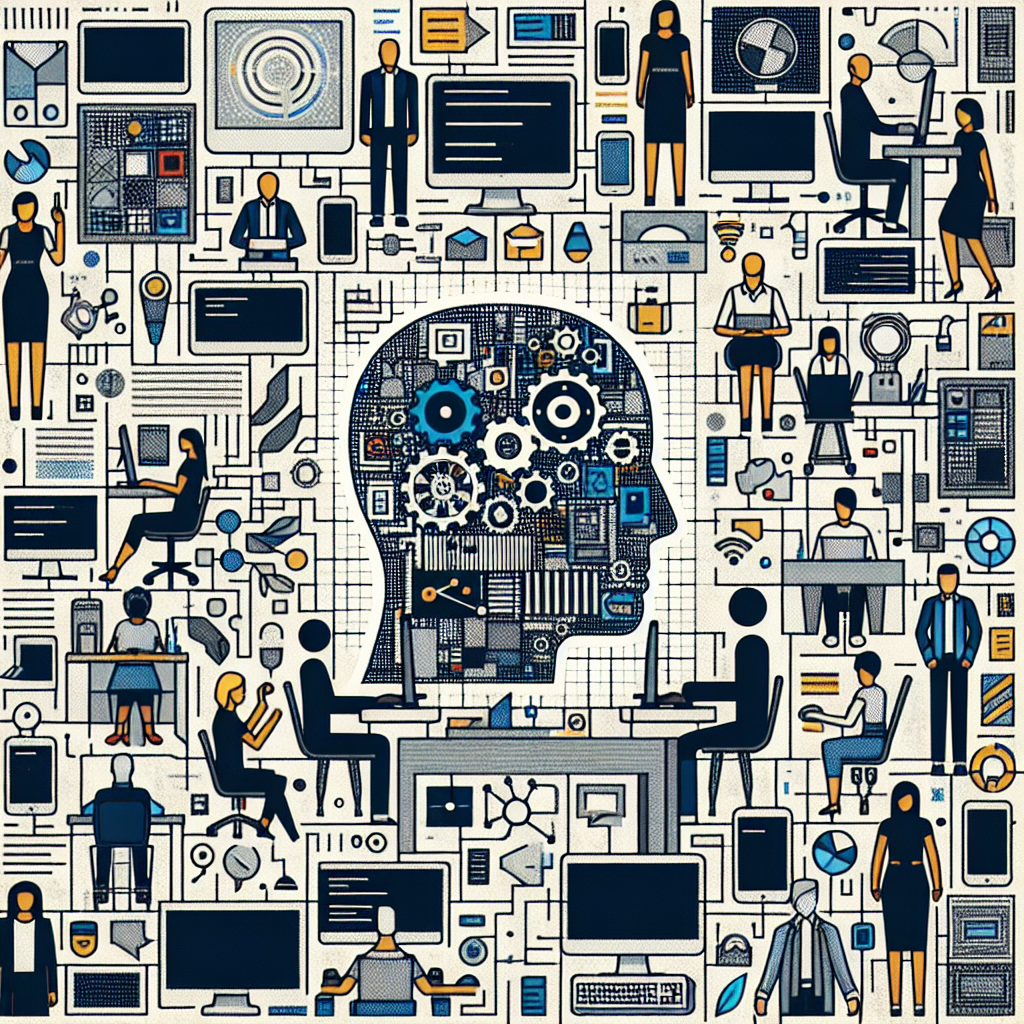In recent years, artificial intelligence (AI) has become increasingly prevalent in the workplace, driving innovations and transforming industries. However, the adoption of AI has often been limited to large corporations with significant resources and technical expertise. This has created a barrier to entry for smaller businesses and organizations that may not have the resources or knowledge to leverage the benefits of AI.
Fortunately, advancements in AI technology are now making it more accessible and democratizing its use in the workplace. This democratization of AI is breaking down barriers and allowing organizations of all sizes to harness the power of artificial intelligence to drive growth, increase efficiency, and improve decision-making.
In this article, we will explore the democratization of AI in the workplace, the benefits it offers, and how organizations can leverage AI to stay competitive in today’s rapidly evolving business landscape.
### The Democratization of AI in the Workplace
The democratization of AI refers to the trend of making AI technology more accessible and user-friendly for organizations of all sizes and industries. Traditionally, AI systems required specialized technical expertise to develop, implement, and maintain, making them out of reach for many businesses. However, recent advancements in AI technology have led to the development of user-friendly tools and platforms that enable organizations to easily integrate AI into their existing systems and processes.
One of the key drivers of the democratization of AI is the development of cloud-based AI platforms. These platforms provide organizations with access to AI tools and resources on a subscription basis, eliminating the need for significant upfront investment in hardware and software. This makes it easier for organizations to experiment with AI applications and scale their use as needed.
Additionally, advancements in AI algorithms and machine learning techniques have made it easier for organizations to develop and deploy AI solutions without the need for specialized expertise. Many AI platforms now offer pre-built models and templates that organizations can customize to meet their specific needs, reducing the time and resources required to implement AI solutions.
### Benefits of Democratizing AI in the Workplace
The democratization of AI offers a wide range of benefits for organizations, regardless of their size or industry. Some of the key benefits include:
1. Increased efficiency: AI can automate repetitive tasks, streamline processes, and improve decision-making, leading to increased efficiency and productivity in the workplace.
2. Improved decision-making: AI can analyze vast amounts of data and identify patterns and trends that humans may overlook, enabling organizations to make more informed and data-driven decisions.
3. Enhanced customer experiences: AI can personalize customer interactions, provide real-time support, and anticipate customer needs, leading to improved customer satisfaction and loyalty.
4. Cost savings: AI can reduce operational costs, optimize resource allocation, and prevent costly errors, leading to significant cost savings for organizations.
5. Competitive advantage: By leveraging AI technology, organizations can gain a competitive edge in their industry, drive innovation, and stay ahead of the competition.
### How Organizations Can Leverage AI in the Workplace
To leverage the benefits of AI in the workplace, organizations should consider the following steps:
1. Identify business challenges: Organizations should identify areas in their operations where AI can add value, such as automating repetitive tasks, improving decision-making, or enhancing customer experiences.
2. Evaluate AI platforms: Organizations should research and evaluate AI platforms that align with their specific needs and goals. Factors to consider include ease of use, scalability, cost, and support services.
3. Develop a strategy: Organizations should develop a clear AI strategy that outlines their goals, timelines, and resources required to implement AI solutions successfully.
4. Train employees: Organizations should provide training and support to employees to help them understand and use AI tools effectively. This can help employees embrace AI technology and drive its adoption in the workplace.
5. Measure impact: Organizations should regularly measure the impact of AI on their operations, such as improved efficiency, cost savings, and customer satisfaction. This can help organizations optimize their AI strategies and identify areas for improvement.
### FAQs
1. What are some common misconceptions about AI in the workplace?
Some common misconceptions about AI in the workplace include the belief that AI will replace human workers, that AI is only for large corporations, and that AI is too complex and expensive for small businesses to use. In reality, AI can complement human workers, is becoming more accessible to organizations of all sizes, and can be cost-effective with the right tools and strategies.
2. How can AI help improve decision-making in the workplace?
AI can help improve decision-making in the workplace by analyzing large amounts of data, identifying patterns and trends, and providing insights that humans may not be able to see. This can help organizations make more informed and data-driven decisions, leading to better outcomes and increased efficiency.
3. What are some examples of AI applications in the workplace?
Some examples of AI applications in the workplace include chatbots for customer support, predictive analytics for forecasting sales and demand, image recognition for quality control, and natural language processing for analyzing customer feedback. These applications can help organizations automate tasks, improve processes, and enhance customer experiences.
4. How can organizations ensure the ethical use of AI in the workplace?
Organizations can ensure the ethical use of AI in the workplace by implementing clear guidelines and policies for the use of AI, ensuring transparency and accountability in AI decision-making, and regularly monitoring and evaluating the impact of AI on employees and customers. Additionally, organizations should prioritize data privacy and security when implementing AI solutions.
In conclusion, the democratization of AI in the workplace is opening up new opportunities for organizations of all sizes to leverage the power of artificial intelligence to drive growth, increase efficiency, and improve decision-making. By embracing AI technology and following best practices, organizations can stay competitive in today’s rapidly evolving business landscape and deliver better outcomes for their employees and customers.

